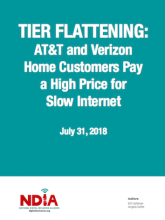Consumer Reports Asks and People Answer: Love Chattanooga, Hate Comcast
Consumer Reports (CR) has once again gone straight to the source to collect opinions on subscribers’ experiences with their Internet access, telephone, and pay TV services. Unsurprisingly, a vast majority of respondents to their survey of 176,000 people expressed dissatisfaction with the large national providers. Once again, municipal network Chattanooga EPB Fiber walked away as the only Internet service provider to receive top marks for value, speed, and reliability.
This isn’t the first time the Tennessee publicly owned network appeared at or near the top of the list in a customer satisfaction survey. In addition to consistent high scores on CR surveys, EPB Fiber has also earned kudos from J. D. Power.
After Chattanooga EPB Fiber, Google Fiber was the only private sector ISP to garner a positive rating from subscribers. Google Fiber also obtained a favorable score for value.
Bigger is Better (Not!)
The most recent survey from CR also underscored what many Internet access, pay TV, and telephone subscribers keep expressing year after year — that they despise the big, corporate behemoth providers. When it comes to Internet access, smaller cable ISPs fared a little better, but only Armstrong Cable Company, serving communities in Pennsylvania, Ohio, and four other states, received an “overall satisfaction” rating.
RCN, Hawaiian Telecom, and Grande Communications also did better than the large ISPs, including Comcast, Spectrum, and Cox Communications.
Hiding Fees in the Bundles
According to a CR article on their survey and analysis of the results, approximately 75 percent of subscribers answering the survey needed to bundle TV, Internet access, and telephone to obtain what they thought was the best deal. Subscribers reported that, even though they had to continually haggle for acceptable pricing, they still felt overcharged.



